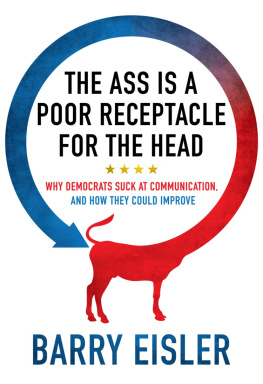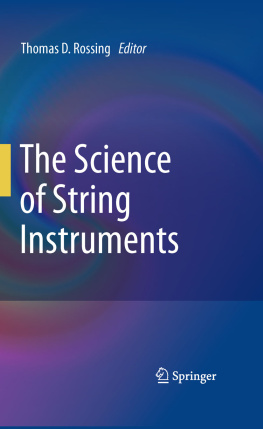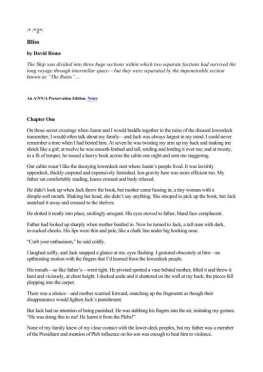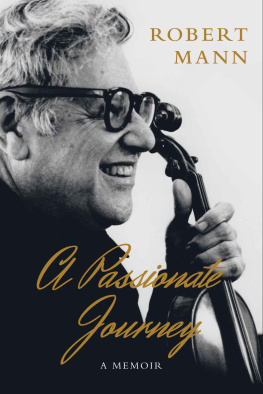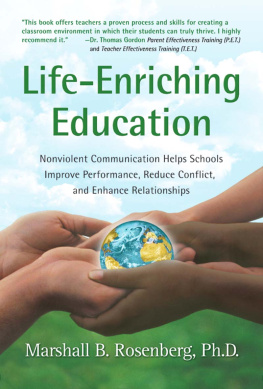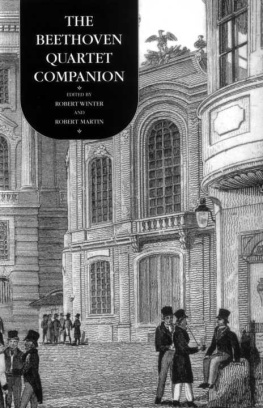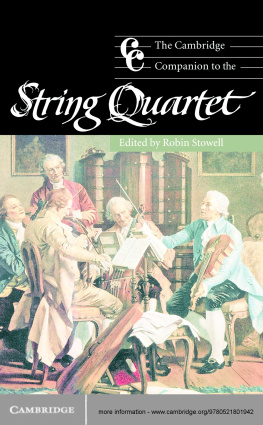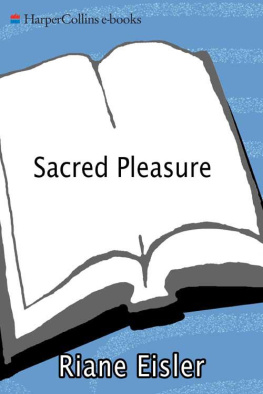
Publisher: David A. Lusterman
Editorial Director: Jeffrey Pepper Rodgers
Editor: Mary VanClay
Associate Editor: Jessamyn Reeves-Brown
Assistant Editor: Marsha Gonick
Designer: Ann Leonardi
Production Coordinator: Christi Payne
Marketing Manager: Jennifer Fujimoto
Front cover: Emerson String Quartet, photo by Christian Steiner.
Chapter Photographs: American String Quartet, photo by John Chidiac; Juillard String Quartet, photo by Erich Hartmann/Magnum; Tokoyo String Quartet, photo by Martha Swope; Borodin String Quartet, photo by Thomas Muller; Manhattan String Quartet, photo by Jamie Phillips; St. Petersburg String Quartet, photo by Vadin Jegorovsky; Mendelssohn String Quartet, photo by Christian Steiner; Orino String Quartet, photo by Nora Feller; Guarneri String Quartet, photo by Dorothea von Haeften;
Contents 2000 by String Letter Publishing, Inc., David A. Lusterman, Publisher.
Printed in the United States of America.
All rights reserved.
This book was produced by String Letter Publishing, Inc.
PO Box 767
San Anselmo, California 94979
(415) 485-6946
AllThingsStrings.com
StringLetter.com
Library of Congress Cataloging-in-Publication Data
Eisler, Edith.
21st-century string quartets / by Edith Eisler.
p.cm. (Strings backstage)
Contents: v. 1. American String Quartet. Borodin String Quartet. Emerson String Quartet. Guarneri String Quartet. Juilliard String Quartet. Mandelring String Quartet. Manhattan String Quartet. Mendelssohn String Quartet. Orion String Quartet. St. Petersburg String Quartet. Tokyo String Quartet.
ISBN 978-1-890490-15-7
ISBN 978-1-936604-09-8 (ebook)
1. String quartets (Musical groups) I. Title: Twenty-first-century string quartets. II. Title. III. Series.
ML 398 .E37 2000
785.7194dc21
99-054129
String Letter Publishing

The music that has been written for string quartet is some of the most beloved in all of classical-music literature. For many, the string quartet epitomizes chamber-music performance, and the very name chamber music points up the intimacy that was once the norm for both performer and audience. Although today most concerts are held in auditoriums rather than private salons, nevertheless the music itself, and the personal involvement of the four players, still casts a spell over listeners and their emotions.
Like the music itself, however, life as a string-quartet member is complex. As Joel Smirnoff of the Juilliard String Quartet explains, the art of chamber-music playing is the art of being able to produce something beautiful while you are listening very carefully to whats going on around you, and adapting to it and making changes on the spur of the moment, in time and pitch, and in terms of both technical and interpretive things. Each musical part is essential and must be heard, yet all the voices must blend into a whole that speaks with a different voice than any of the individual parts.
And the challenge is not simply technical. While the soloist, as star of the show, may have to deal with loneliness as well as acclaim, the quartet player must constantly communicate, negotiate, compromise, and share with other equally dedicated, talented, and opinionated musicians. Players who create and maintain the personal and musical relationships necessary in a fine quartet have achieved a special kind of magic.
The 11 quartets profiled in this book represent some of the most talented chamber musicians of our time. They are passionate in their discussions of the most famousand at times the most problematicworks in the genre: the quartets of Beethoven, Shostakovich, Jancek, Bartk, Schoenberg, and others. Their explanations of how they work through the music, from the practice room to the stage, can inform and inspire. Just as the music speaks to us all, so do the musicians, since their basic lessons pertain not only to quartet players but also to humans in any relationship: learn to speak updiplomaticallyand learn to listen.
Mary VanClay
Editor

The Emerson String Quartet is a prizewinning ensemble with an appetite for big projects. Recording exclusively on Deutsche Grammophon, the group has won four Grammy Awards (for best classical album and best chamber-music performance). The players have spent nearly two decades as faculty members at the Hartt School of Music of the University of Hartford in Connecticut, where they run a special training program for young quartets. Each of the musicians maintains an active solo schedule, and cellist David Finckel, with his wife, pianist Wu Han, also codirects the SummerFest La Jolla series and cofounded a recording company called ArtistLed.
In the 1980s, the Emerson Quartet gained national attention for presenting the six Bartk quartets in a single eveningfirst at Alice Tully Hall, and later at its debut at Carnegie Hall. In this 1997 interview, the group discusses its then-current project of performing and recording the complete Beethoven quartets. Now, in 19992000, it is performing the complete Shostakovich quartets and has just released a new CD set of the works, having recorded them live at Aspen.
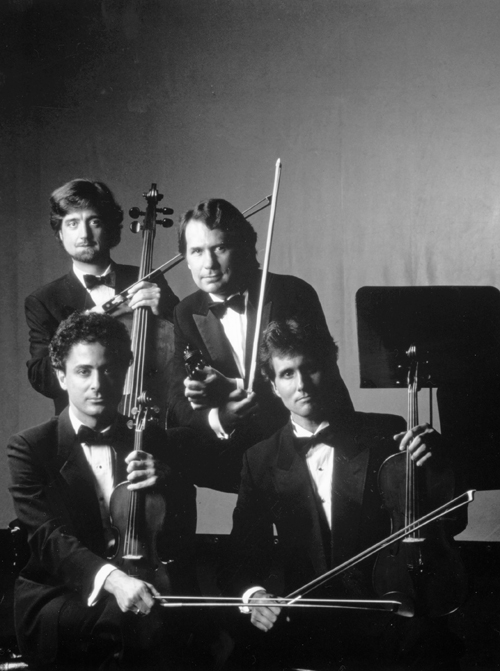
Beethoven to Bartk
I still remember the first tour I did with [the group], says Lawrence Dutton, violist of the Emerson String Quartet. We started in Corpus Christi, Texas, went on to Oak Ridge, Tennessee, Mobile, Alabamaall little places. And after expenses, I think we each made $50, and if my mother hadnt picked me up at the airport, Id only have made $25.
In 1979, that wasnt so bad, comments violinist Philip Setzer. At least we came out ahead.
Since then, the Emerson Quartet, whose other members are violinist Eugene Drucker and cellist David Finckel, has become one of the most sought-after groups of its kind, with an extensive discography on Deutsche Grammophon to its credit and more than 100 concerts a year in the worlds most prestigious concert halls. This keeps the players so relentlessly busy that I have to catch them during breaks in rehearsals and recording sessions, and separately over the telephone. Yet they seem entirely unruffled: concentrating on the matter at hand, they talk about their highly unusual programming with zest and enthusiasm, about the music they play with thoughtful eloquence, about the present state of classical music with passionate concern. Yet always lurking around the corner in even the most serious discussion is the witty riposte, the humorous twinkle of the eye.
Of the four Emerson players, Dutton is the only one who does not come from a family of musicians. Setzers parents were both violinists in the Cleveland Orchestra under George Szell. Druckers father, Ernest, was a violinist in the Metropolitan Opera Orchestra and had been a member of the famous Busch Quartet as well as of the Busch chamber orchestra. I met him when I joined that groupmy very first job in Americaso talking about him stirred up many cherished memories. My father told me he knew you, Drucker notes. And do you know [violinist] Adolf Buschs collected letters, called Letters, Pictures, Memories (Arts and Letters Press [PO Box 101, Walpole, NH 03608-0101], 1991)? It was to my father that he wrote his last letter, congratulating him on the birth of a second sonme.
Next page



